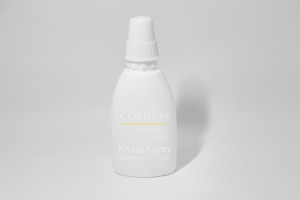
COVID-19 Notes
 By Dr Satish K Gupta*
By Dr Satish K Gupta*
To make nasal vaccines is not an easy task
The nasal mucosa is lined by ciliated epithelium and backed by NALT (nasopharynx associated lymphoid tissue).
Ciliated epithelium acts as a mechanical barrier while the NALT immune mechanism acts at the subcellular level to capture and neutralize the microbes entering the nose.
Even the killed virus or viral components may it difficult to dodge the alert competent sentries at the nasal doorway.
Preexisting IgA antibodies induced by similar microbes may act as additional entrapment backup force.
Adding adjuvants to the nasal vaccine may irritate the sensitive nasal mucosa.
Any odours in the vaccine could be another problem leading to non-acceptance.
We need to use a nasal friendly virus to carry the gene of spike protein for SarsCov-2, so most of the nasal vaccines we find are vector-based vaccines.
BBV154 from Bharat Biotech vaccine is a vector-based vaccine using chimp Adenovirus.
DelNs1 from China is an H1N1 or H3N2 influenza virus-based vaccine
Recall that China and Bharat biotech had ready hand ready corona killed vaccines used in the intramuscular platform.
Codagenix is a measles virus-based vaccine
Only AstraZeneca has used its Covishield AZD1222 as a nasal vaccine in trials because it was already a vector-based vaccine.
The minimum required efficacy of 50% for vaccines seems a bit high for nasal vaccines. Do we need to lower this bar?
Even live Coronavirus instilled in the nose was not able to infect more than 54% of people. Points to ponder.
Also read:
- Is nasal vaccine the last weapon in our armoury to end pandemic?
- Shrinking Pandemic: What a feeling of freedom!
*Dr. Satish K Gupta is an MD in Medicines, a Visiting Senior Consultant Physician and Internist at Max Super Speciality Hospital, and a Clinical Assistant Professor at GS Medical College, Chaudhary Charan Singh University, Meerut. He is the author of Journey of COVID in India: A Doctor’s Perspective.





